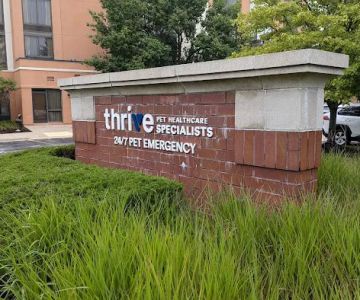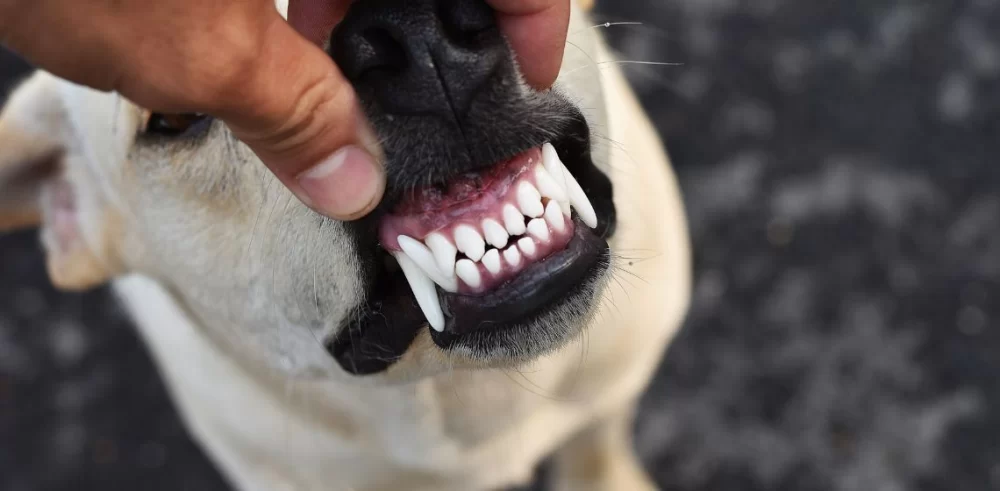- Understanding Dental Disease in Dogs
- Common Signs of Dental Disease in Dogs
- Why Early Detection Matters
- Real-Life Case Examples
- Effective Prevention and Care Strategies
- Professional Help at Hidden Brook Veterinary
1. Understanding Dental Disease in Dogs
Dental disease is one of the most common health problems in dogs, yet it often goes unnoticed until it becomes severe. It encompasses a range of issues including plaque buildup, tartar formation, gingivitis, and periodontal disease. Over time, these conditions can cause pain, tooth loss, and even affect your dog’s overall health by allowing bacteria to enter the bloodstream and impact vital organs.
Unlike humans, dogs do not express discomfort clearly, which makes recognizing the signs of dental disease in dogs crucial for pet owners. Understanding the stages of dental disease helps in identifying the problem early and seeking timely treatment.

2700 W Higgins Rd, Hoffman Estates, IL 60169, USA
See DetailsStages of Canine Dental Disease
Dental disease typically progresses through several stages:
- Plaque Accumulation: A sticky film of bacteria forms on the teeth.
- Tartar Buildup: Plaque hardens into tartar, which is more difficult to remove.
- Gingivitis: Inflammation of the gums caused by tartar irritation.
- Periodontal Disease: Advanced infection leading to damage of the gums, bone, and tooth roots.
2. Common Signs of Dental Disease in Dogs
Recognizing the early signs of dental disease in dogs can significantly improve treatment outcomes. Here are key indicators every dog owner should watch for:
Bad Breath
While all dogs have some natural odor in their mouths, persistently bad breath often signals underlying dental problems. If your dog’s breath has a strong, unpleasant smell that doesn’t improve after brushing or dental treats, it is a red flag.
Changes in Eating Habits
Dogs suffering from dental pain may eat less, avoid hard kibble, or drop food while chewing. Reluctance to chew or favoring one side of the mouth can also indicate oral discomfort.
Visible Gum Changes
Healthy gums should be pink and firm. Signs such as redness, swelling, bleeding, or recession around the teeth are common signs of gum disease. Gum recession, in particular, exposes sensitive tooth roots to infection.
Excessive Drooling and Pawing at the Mouth
If you notice your dog drooling more than usual or pawing at their face, this might be a response to oral pain or irritation.
Loose or Missing Teeth
Advanced dental disease can lead to teeth becoming loose or falling out. This often indicates severe periodontal damage requiring veterinary intervention.
3. Why Early Detection Matters
Detecting signs of dental disease in dogs early not only reduces pain and discomfort but also prevents more serious health issues. Untreated oral infections can spread and cause systemic problems, including heart, liver, and kidney disease.
Early dental care often requires less invasive treatments, such as professional cleaning and minor dental work, saving your dog from painful procedures and lengthy recoveries. Moreover, maintaining good dental health contributes to your dog’s longevity and quality of life.
4. Real-Life Case Examples
Consider the story of Max, a 7-year-old Labrador Retriever, whose owner noticed a subtle change in his appetite and occasional pawing at his mouth. Initially dismissing it, they eventually brought Max to Hidden Brook Veterinary. A thorough dental exam revealed advanced periodontal disease that was causing severe pain and infection. Thanks to timely intervention with professional cleaning and targeted treatment, Max made a full recovery and returned to his lively self.
Another example is Bella, a small terrier with persistent bad breath and inflamed gums. Early detection at a routine check-up led to a simple dental cleaning that halted the progression of her dental disease. These cases highlight the importance of vigilance and regular veterinary visits to catch signs before they escalate.
5. Effective Prevention and Care Strategies
Preventing dental disease in dogs requires a consistent approach combining home care and professional support:
Daily Brushing
Brushing your dog’s teeth daily with dog-specific toothpaste is the most effective way to prevent plaque buildup. It may take patience and gentle training, but it significantly improves oral health.
Dental Chews and Toys
Chewing helps mechanically reduce plaque and tartar. Providing your dog with safe dental chews or toys encourages this natural behavior and aids oral hygiene.
Regular Veterinary Checkups
Routine dental exams and professional cleanings performed by veterinarians help maintain your dog’s dental health. Veterinarians can identify early signs that owners might miss and provide tailored care plans.
Nutrition and Diet
High-quality diets formulated to support dental health can contribute to reducing plaque formation and promoting gum health.
6. Professional Help at Hidden Brook Veterinary
When it comes to addressing signs of dental disease in dogs, professional guidance is indispensable. Hidden Brook Veterinary offers comprehensive dental services, including detailed oral examinations, advanced cleaning techniques, and treatments customized to your dog’s needs.
The experienced team at Hidden Brook Veterinary understands the nuances of canine dental health and can provide advice on effective home care, dietary recommendations, and behavioral strategies to help your dog maintain a healthy smile. For pet owners seeking the best in veterinary dental care and products, Hidden Brook Veterinary is a trusted resource.
Don’t wait until symptoms worsen—early intervention can transform your dog’s health and happiness. Contact Hidden Brook Veterinary to schedule a dental checkup or consultation today.











